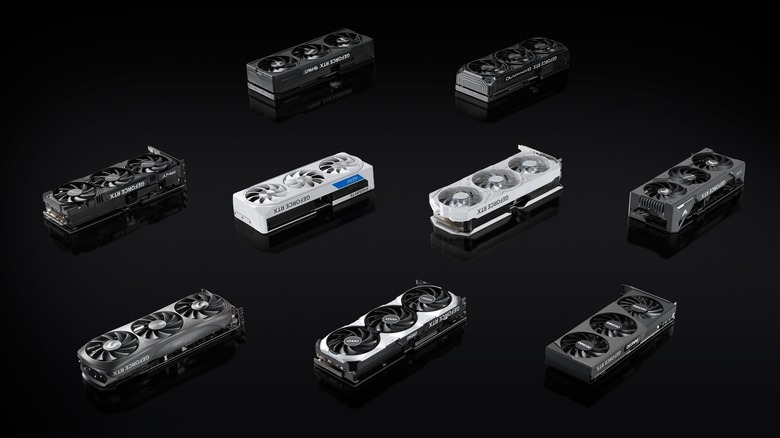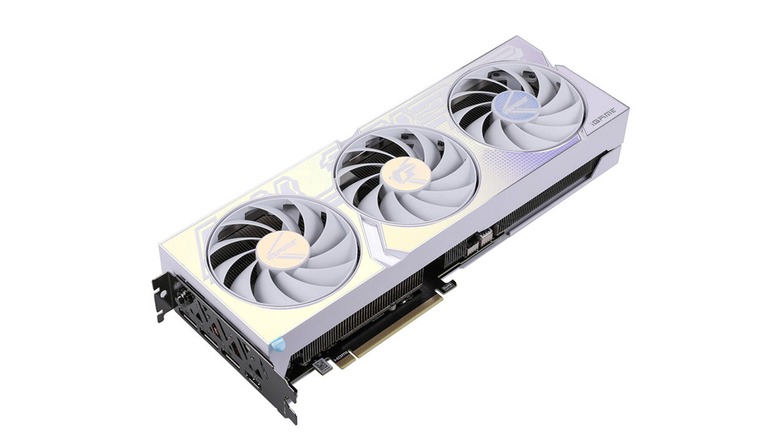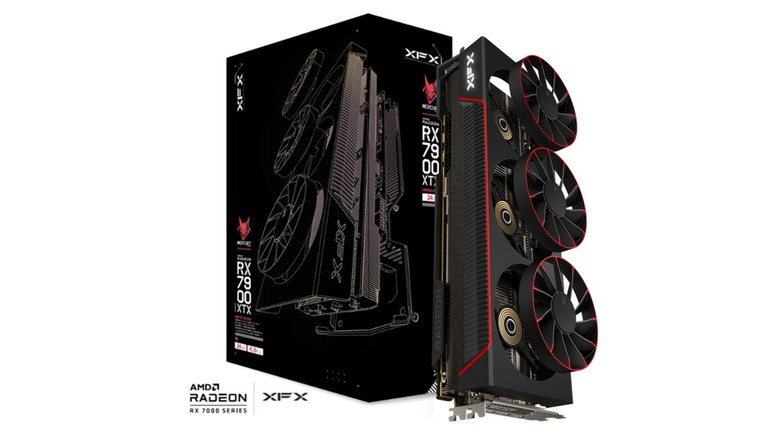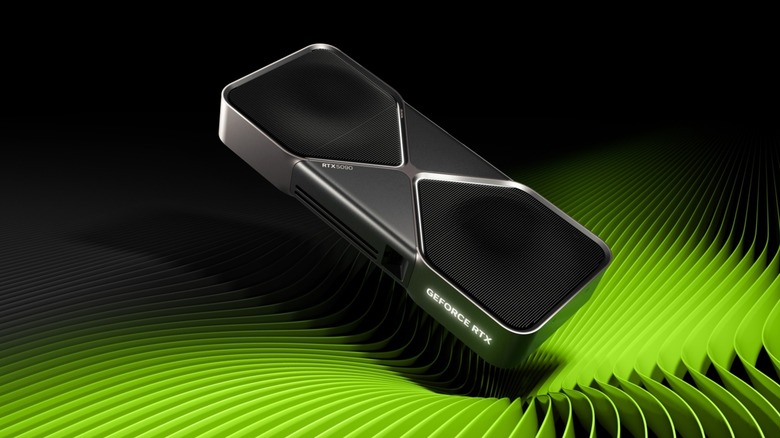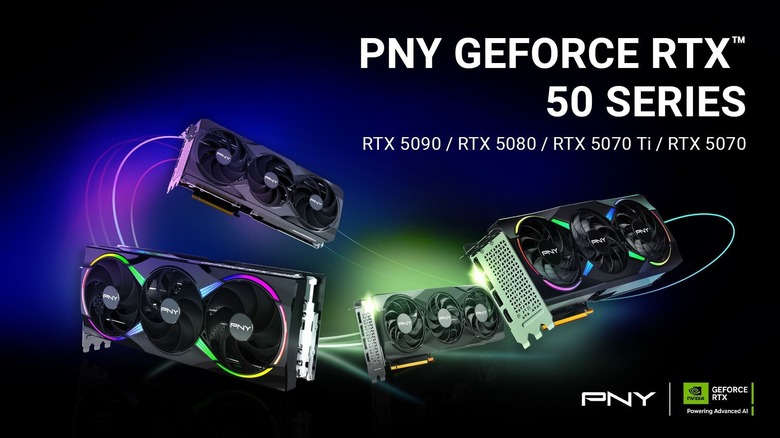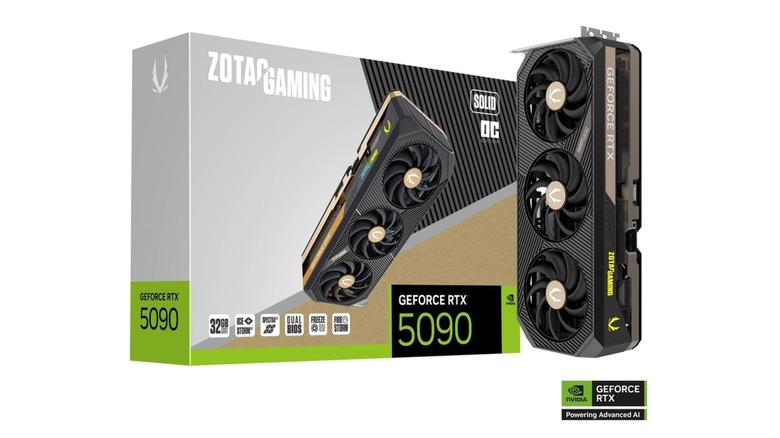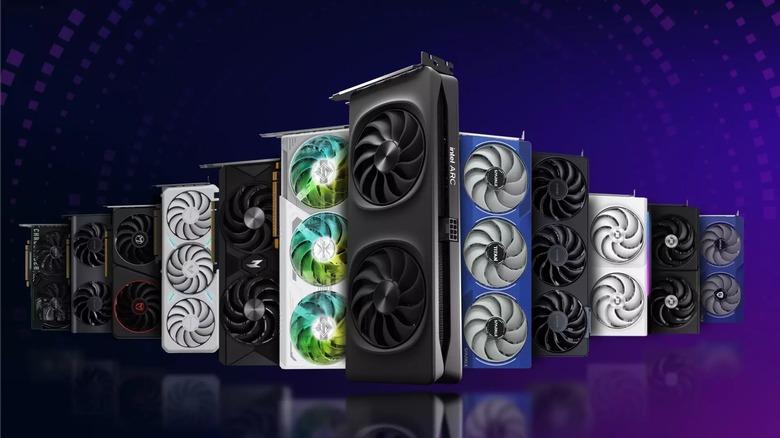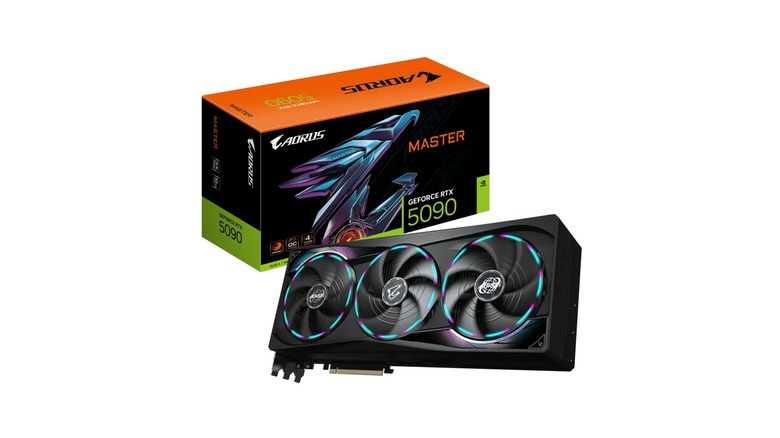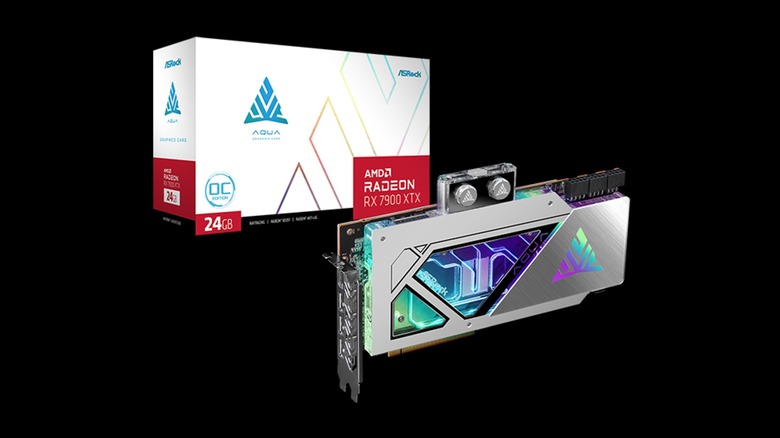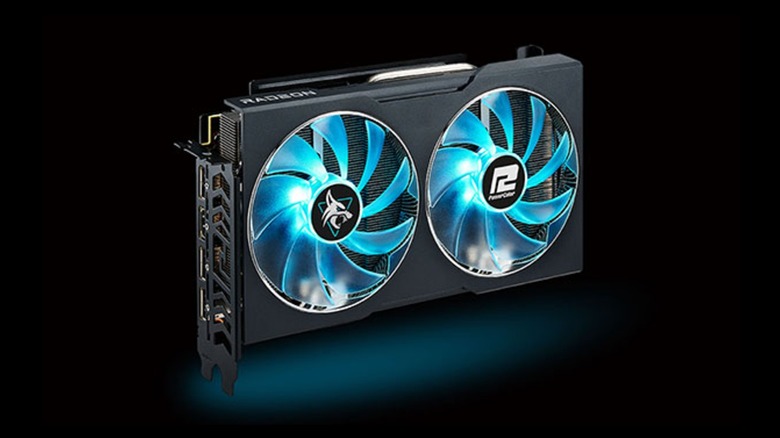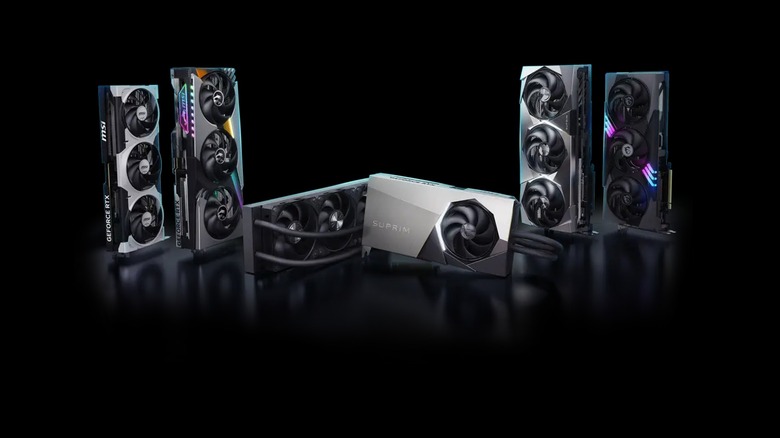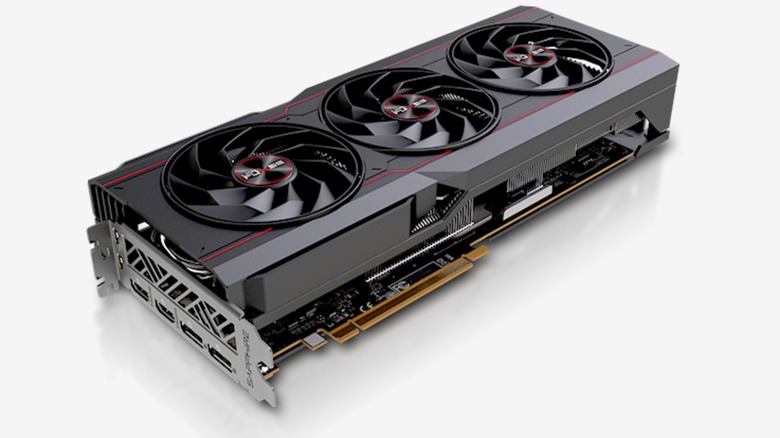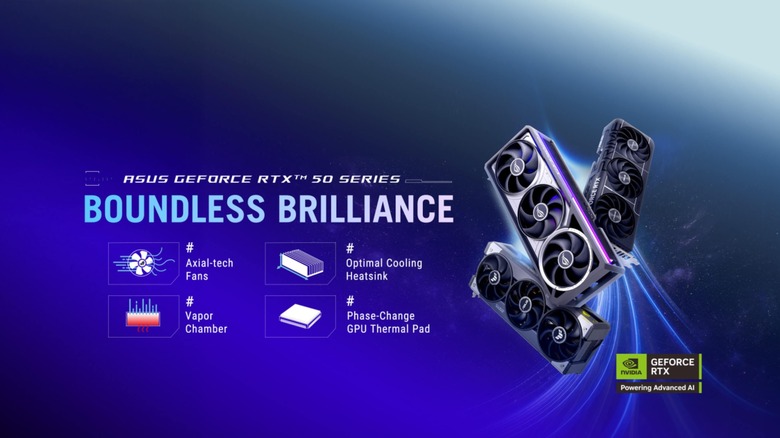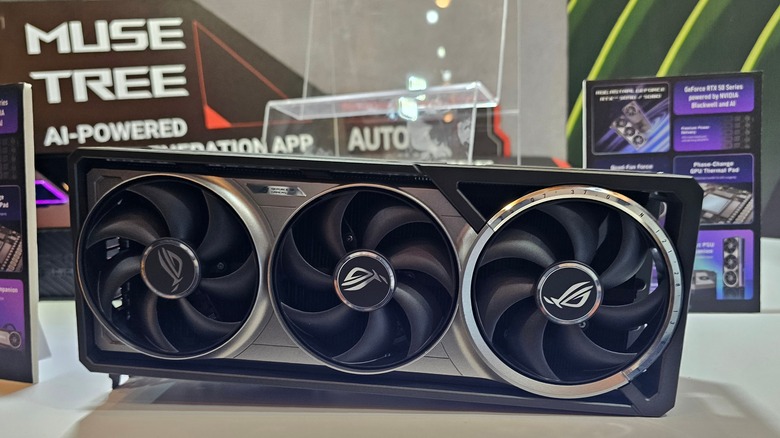Major Graphics Card Brands Ranked Worst To Best
We may receive a commission on purchases made from links.
When trying to look at the best graphics card for yourself, the brand matters almost as much as the model itself. Cooler designs, special features, and extra overclocking capabilities can make a big difference in your experience — even if the actual performance doesn't change all that much. Over the past few years, I've spent a great deal of time looking at the major brands to try and find the perfect card for myself. Unfortunately, making this choice has only become more complicated with the rough launch of the RTX 50 series, with new GPUs reaching staggering prices from every storefront.
Although the latest cards are in an unfortunate spot, there are still plenty of other options to choose from. Nvidia's GeForce RTX 40 series — as well as AMD's RX 7000 series and Intel's Arc GPUs — can all still be found at reasonable prices. This makes it much easier to make a judgement call on each brand, especially when looking at their history of dependability, performance, price, and availability. Drawing from my years of research and experience with cards from these companies, here's my most up-to-date ranking of the best graphics card brands you can buy today.
12. Colorful, Inno3D, Galax
Colorful, Inno3D, and Galax have a lot of similarities with each other. Each brand is entirely focused on GeForce GPUs, so you aren't able to weigh the pros and cons of Nvidia vs. AMD. They also have unique features built into each card, such as with Colorful's smart LCD displays or Galax's app-centric customization. To top it all off, all three brands have very positive standing from both professional reviewers and average PC builders alike. Even if you have other options available, these brands are worth considering if you can find them.
Unfortunately, finding cards from these brands is the hard part. All three of them primarily sell in specific overseas markets, with only Inno3D appearing on easily-accessible websites like Newegg. Galax has its own online store, but none of its cards are currently in stock, and Colorful is practically nonexistent outside of storefronts like eBay. With GPUs already in short supply, the limited availability of these brands makes them impossible to recommend unless you live near their primary markets — mostly in Asia or Australia.
11. XFX
XFX ends up in a bit of an odd spot simply due to circumstance. It's able to pump out some fantastic cooling performance while keeping up with its competitors almost effortlessly, and it's commonly mentioned by AMD fans as one of the "big three" GPU brands for those cards. This ironically ends up being the source of its woes, as XFX faces tough competition from other AMD-exclusive brands like PowerColor. This wouldn't be a problem on its own, as the comparisons involving Nvidia and AMD have become very close in recent years, but this brand is another that falls short thanks to the existence of competitors.
Sapphire and PowerColor are the other two major brands partnered solely with Team Red, with AMD itself not easily providing its own reference cards. Compared to those two, XFX doesn't have very many options of its own, failing to undercut its competitors' prices or provide more powerful cooling options. While it's not all that bad of a choice on its own, you simply have very few reasons to go with XFX when other brands are either more efficient or less costly.
10. Nvidia
It barely scrapes into the top 10 of this list, but Nvidia is still a top choice as a graphics card brand in its own right. Its Founders Edition (FE) reference cards will almost always have the lowest MSRP of their models outside of sales, and they'll manage to stay perfectly cool under duress. Buying directly from Nvidia will pretty much guarantee you the best budget options for these cards.
The downside? Nvidia doesn't have any options outside of FE cards, and its partners are almost always better when it comes to cooling, noise levels, and even actual gaming performance. You're usually paying a hefty premium to get these bonuses, but they come with plenty of extras like customizable lighting and additional BIOS settings. Founders Edition cards are also much more difficult to come by, with certain models not even having them at all. We mentioned this in our Gigabyte GeForce RTX 4070 Ti review, and it seems like this will remain true for the 5070 Ti as well, limiting your options to other brands.
9. PNY
While it doesn't quite have the best recognition of every third-party brand, PNY has found a lot of customer satisfaction in recent years. The company has managed to produce a wide range of cards, allowing customers to have more options to choose from with higher clock speeds and fancier lighting effects. The lower-tier ones manage to match the lowest MSRP for each model, too. For various reasons, though, it still falls a bit behind when it comes to variety and quality.
PNY is another Nvidia-only brand, but it's also one of the few that has ended up with cards performing worse than their Founders Edition counterparts. This isn't a common problem for the most part, but it's one you might have to watch out for with the newest cards only just coming out. Even the performance of its top-end cards leaves a lot to be desired, which isn't helped by the lack of extra features outside of RGB and higher clock speeds. Many buyers have also reported issues with the company's support, which can be especially troublesome if you end up with a defective card.
At its baseline, PNY is still very capable and worth considering at its welcoming price points. But both performance and cooling will be an issue at that cost, and other brands have greater benefits if you want to spend extra on those.
8. Zotac
Zotac has quite a bit in common with PNY. It's one more lesser-known Nvidia-only graphics card brand with questionable customer support and a handful of feature-lacking GPUs. What gives Zotac the edge over PNY, though, is its surprisingly positive performance, with more recent cards managing to stay cool and quiet. Its 4080 Super has even managed to top the charts in benchmarks with other brands. That said, the 5080 isn't quite on top in the same way.
The 50 series launch has been pretty problematic for most brands, but Zotac in particular has also been facing some issues. This is partially thanks to its poor specialized software, which has caused its overclocking capabilities to deteriorate rapidly for some users. Beyond this, Zotac is still an attractive choice when looking at costs, with none of its GPUs having an MSRP too high above the original. If you have a tight budget, already run stock settings, and don't want to spend too much on just a handful more frames per second, then Zotac is far from the worst choice.
7. Intel
Intel is a newcomer to the graphics card scene, which was very apparent in its A series launch. Middling performance and in-game bugs made it clear that these first few cards were either laying rough groundwork or were just a one-time failed experiment. Luckily, it turned out to be the former. The recent Arc B series has received immensely positive reviews from both professionals and casual gamers alike. We recently compared the Intel Arc B580 to Nvidia's RTX 4060, and the B580 just about blew its rival away — except when it came to driver support and ray tracing.
Intel is still finding its footing in the graphics card market, so you're going to be left with even less options than any other brand. The new Arc B cards are mostly a great choice for budget-minded buyers, and other companies have started to make them as well. They aren't difficult cards to recommend on their own, but you'll get more bang for your buck if you buy them from third-party manufacturers rather than directly from Intel.
6. Gigabyte
Gigabyte is especially notable as one of the biggest third-party graphics card brands, alongside MSI and Asus. This is for very good reason, as all three companies carry the widest range of GPUs from both Nvidia and AMD, offering both budget options and top-end enthusiast picks. With Gigabyte in particular, there's usually at least one model from each tier that goes for its lowest MSRP, though these lower-end cards are usually held in poor regard. Despite its relative popularity, there are many reasons why Gigabyte isn't often considered when asking who makes the best graphics card.
Throughout its history, Gigabyte GPUs have been notorious for their failure rates. A high number of returns combined with exceptionally poor support hasn't done much for their reputation, which isn't helped by multiple cards from the brand being reported to crack under their own weight. Combine that with its cheapest GPUs having abysmal temperatures, and it's not hard to see why some are skeptical of Gigabyte's popularity.
That skepticism might be misplaced, though. If you're willing to spend extra on a better cooler, the most recent Gigabyte GPUs are a pretty great choice, massively outpacing Founders Edition cards with quieter fan noise while still keeping temperatures cool thanks to alternative BIOS settings. With a bit of luck, you could end up with a top-tier Gigabyte card that will last for many years to come.
5. ASRock
ASRock might be better known for providing some of the best motherboards for AMD processors, but its graphics cards are nothing to sneeze at either. It has a wide variety of models to choose from, with many bearing signifying names such as Steel Legend or Phantom Gaming. The prettier and more powerful cards don't come with too much of a price increase, except for one liquid-cooled behemoth. At first, the options might not seem all that wide, considering how many of those cards are from AMD.
Although it might seem like it at first, ASRock isn't solely an AMD brand. It has recently begun carrying Intel's latest GPUs, and its version of the Arc B580 flat-out invalidates the reference model. It manages to run with much better cooling and quieter noise on top of some extra RGB customization. The company's AMD cards are still decent alternatives to more dedicated companies, but if you're after an Arc GPU, there's practically no better brand to get one from than ASRock.
4. PowerColor
Like with XFX, PowerColor focuses entirely on making its own AMD graphics cards. In this case, however, it has a wider range of options that can end up being cheaper in the long run. Its Liquid Devil XTX card is pretty much the best-performing AMD card out there thanks to its liquid-cooling capabilities and custom overclocked BIOS. If nothing else, it manages to fill a niche for AMD enthusiasts who want the highest-end graphics card possible without switching over to Nvidia.
While it's not everyone's first choice when recommending AMD GPUs, PowerColor is still a very strong competitor at its various price ranges. Its 7900 GRE even manages to beat out more expensive Sapphire counterparts in temperature, even if it gets just a bit less in-game performance on average. The fourth and third spots on this list are practically interchangeable due to this, with the main deciding factor simply being whichever brand appeals to you more in terms of looks, features, or price.
3. MSI
MSI stands alongside Gigabyte and Asus as one of the leading graphics card brands. While this leadership is primarily attributed to Nvidia cards, MSI also carries AMD GPUs, each including specialized cooling designs and even support brackets. While the range of AMD products isn't all that vast, each Nvidia card has multiple options for each model, with prices ranging from acceptable to outstandingly low. The cards can all be purchased directly from MSI's official online storefront, too, allowing you to get lucky if you keep an eye out for sales.
One thing you'll have to watch out for with MSI is cost. The most expensive MSI gaming products available today could set you back thousands of dollars, and even the cheaper cards are still usually above their base model's MSRP. Some design flaws have also plagued these lesser cards when it comes to cooling, leading to inconsistent performance at certain resolutions. Fortunately, more expensive cards like the Gaming X Trio options don't have this sort of problem, with their advanced cooling and overclocking making them almost always better than the originals.
Some buyers have shared their own poor experiences with MSI's support, but its failure rates aren't as high as Gigabyte's. The company's reputation is fairly positive beyond this thanks to the intense performance of its highest-end cards. Just be aware that you might lose out on that power when using MSI as a budget pick.
2. Sapphire
Sapphire might not be at the very top end when it comes to performance, but it's a very difficult brand to beat in every other metric. A big reason for this is its popularity, which is clear from multiple AMD owners claiming it's the best of the best thanks to longevity and reliability. This more than makes up for any cooling losses compared to its rivals. Even then, it's usually able to handle itself well in performance comparisons, with very few other brands able to beat it in those areas.
Interestingly, Sapphire is also the one brand that actually provides listings for AMD reference GPUs. You can't actually purchase them on its website, but it goes a long way in establishing Sapphire's place in AMD's ecosystem. They've been partnered for a long time, after all, with the AMD ATI Radeon HD 5870 being a prime example of their cooperation all the way back in 2009. Sapphire has time, reliability, and popularity on its side — if it managed to carry Nvidia cards as well, it would practically guarantee the top spot on this list.
1. Asus
Many people consider Asus as their top choice for the best graphics card. It's not hard to see why when you look at the company's selection, with certain models of GPUs having over 10 different versions with their own price points and features. Low-end variants like the Dual are able to comfortably surpass their Founders Edition alternatives, while the high-end Strix cards include power sensors and extra fan connectors. Many of the overclocked Asus cards even have special switches that allow you to instantly switch from presets of low noise or low temperatures.
However, you might still benefit from putting Asus under a bit of scrutiny. While its failure rates aren't particularly high, many customers have reported terrible customer support experiences, with groups like GamersNexus even investigating the company on suspicion of scamming buyers out of their warranty. The brand is also one of many that raised prices of the RTX 50-series cards after launch, though tariffs and availability concerns were likely bigger reasons for that. Still, price is a continuing concern when top-end Asus cards range from $250 to $650 above the original's MSRP.
In spite of these problems, the overall performance and reliability of Asus GPUs can't be denied. You aren't unjustified in avoiding them if you had bad experiences with the brand before, but you'll still be missing out on valuable features and great performance no matter what price point you're aiming for.
Methodology
On top of my own research and experience, current availability played a big factor in ranking these cards. Certain brands, like EVGA and AMD, were omitted from this list for availability purposes. EVGA discontinued graphics card production after the end of the RTX 30 series, and AMD's reference cards aren't readily available outside of the low-end. Additional options and support also played a role in these rankings, as — for example — a Sapphire card is still going to be useless to someone firmly on Nvidia's side.
Despite the controversial price hikes following the launch of Nvidia's 5090 and 5080, I believe it's worth keeping Asus and MSI as high as they are — at least for now. The RTX 50 launch is a nightmare for just about every brand right now, and their 40 series cards are still proof of how great and valuable their offerings can truly be. It's hard to consider the pros and cons of upgrading to the 50 series cards when they aren't even available. After both stock and prices have stabilized in the coming months — or years, in a worst-case scenario — it should provide some good insight as to whether each brand could hold onto their current position on this list.
